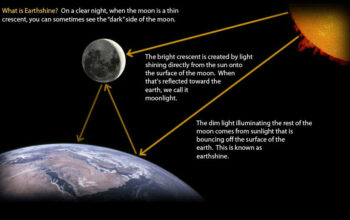Space exploration has perennially enthralled humanity, embodying a quintessential blend of discovery, innovation, and profound inquiry. As the European Space Agency (ESA) pioneers its next-generation space missions, this fascination only deepens, resonating within the collective psyche as we inch ever closer to answering monumental questions about the cosmos and our place within it. The phrase “the future is orbiting closer” invokes a sense of urgency and potential, suggesting that the epochs of theoretical astrophysics and space exploration are converging towards actionable advancements that promise to redefine our understanding of the universe.
At the heart of ESA’s forthcoming initiatives lies an ambition to advance technological sophistication while simultaneously addressing existential challenges faced on Earth. Missions targeting lunar exploration, robotic systems, and interplanetary travel are emblematic of a strategic pivot towards sustainable exploration practices, as well as an opportunity for international collaboration. The Artemis program, championed by NASA, has invigorated ESA’s commitment to contribute technology and expertise to facilitate a sustainable human presence on the Moon. Simultaneously, this initiative offers a platform for ESA to engage in a robust partnership with various spacefaring nations, thereby enhancing the collaborative spirit of exploration that is desperately needed in a world rife with geopolitical strife.
The emphasis on the Moon as a focal point for exploration can be attributed to myriad factors. Firstly, the Moon represents an accessible gateway for future missions extending to Mars and beyond. The potential for lunar bases not only supports extended human presence but also serves as a launchpad for deeper space exploration. Utilizing in-situ resource utilization (ISRU) technologies to harness lunar resources, such as water ice, dramatically alters the feasibility of sustained human missions in the solar system. ESA’s Lunar Gateway project embodies this philosophy, aiming to establish a collaborative space station that will orbit the Moon, thus facilitating a multi-national effort that marries scientific inquiry with logistical efficacy.
In conjunction with lunar efforts, ESA’s portfolio encompasses ambitious plans for Mars exploration. The upcoming ExoMars missions, which include the Rosalind Franklin rover, herald a sweeping examination of Martian geology and potential biosignatures. This exploration is not solely driven by a quest for extraterrestrial life; rather, it stands as a testament to humanity’s enduring curiosity and its quest to comprehend life’s origins. The intersection of astrobiology, geology, and planetary science fosters a holistic approach to Martian exploration, inviting interdisciplinary collaboration that enriches the scientific narrative.
Moreover, the prospect of utilizing advanced robotic systems significantly bolsters ESA’s operational capacity on both lunar and Martian surfaces. Robotics, which have often been relegated to the domains of auxiliary functions, are now positioned as pivotal components of mission success. These systems can execute intricate tasks ranging from habitat construction to sample collection with a precision and efficiency that far surpass human capabilities in uninhabitable environments. The quintessential win-win scenario arises when combining human ingenuity with robotic autonomy, enabling a seamless flow of operations that extends the boundaries of exploration.
The philosophical implications of these missions extend beyond mere scientific inquiry. As ESA embarks on projects like the Jupiter Icy Moons Explorer (JUICE) and the Hera mission to study the binary asteroid system Didymos, they delve into existential questions related to humanity’s future. These explorations necessitate a paradigm shift in our understanding of planetary bodies and their potential for harboring life. The implications of discovering life in our solar system could catalyze an existential reassessment of our role within the universe, igniting debates across scientific, philosophical, and ethical domains.
An undercurrent of contemplation emerges when considering the sociopolitical ramifications of these endeavors. The advancements achieved through ESA’s missions have potential ripple effects on Earth, including technological innovations fostered through space exploration. The development of satellite technologies has already transformed global communication, weather prediction, and natural disaster management. Thus, space exploration transcends the confines of its immediate milieu, offering tangible benefits that resonate with societal exigencies. As such, these missions serve dual roles: uplifting humanity’s horizon while simultaneously addressing pressing terrestrial challenges.
Ultimately, the fascination with ESA’s next-gen space missions stems not solely from the technological triumphs they represent but also from their capacity to reflect on human endeavor and aspiration. The notion that the future is orbiting closer encapsulates both a temporal and spatial yearning—a yearning to transcend our earthly limitations and venture into realms previously confined to the realms of science fiction. As ESA forges ahead, the confluence of ambition, collaboration, and innovation paints a hopeful tableau for humanity’s future in space.
In conclusion, ESA’s ambitious plans for the future of space exploration present a multifaceted vision harmonizing science, technology, and the human spirit. By fostering partnerships and exploring celestial bodies, ESA is not only advancing our understanding of the universe but also optimizing our strategies for sustainable living on Earth. The future is indeed orbiting closer, offering new opportunities for discovery, reflection, and collective progress that echo beyond the confines of our planet.








